The English high street: Waterlooville, Hampshire – how a town centre dies
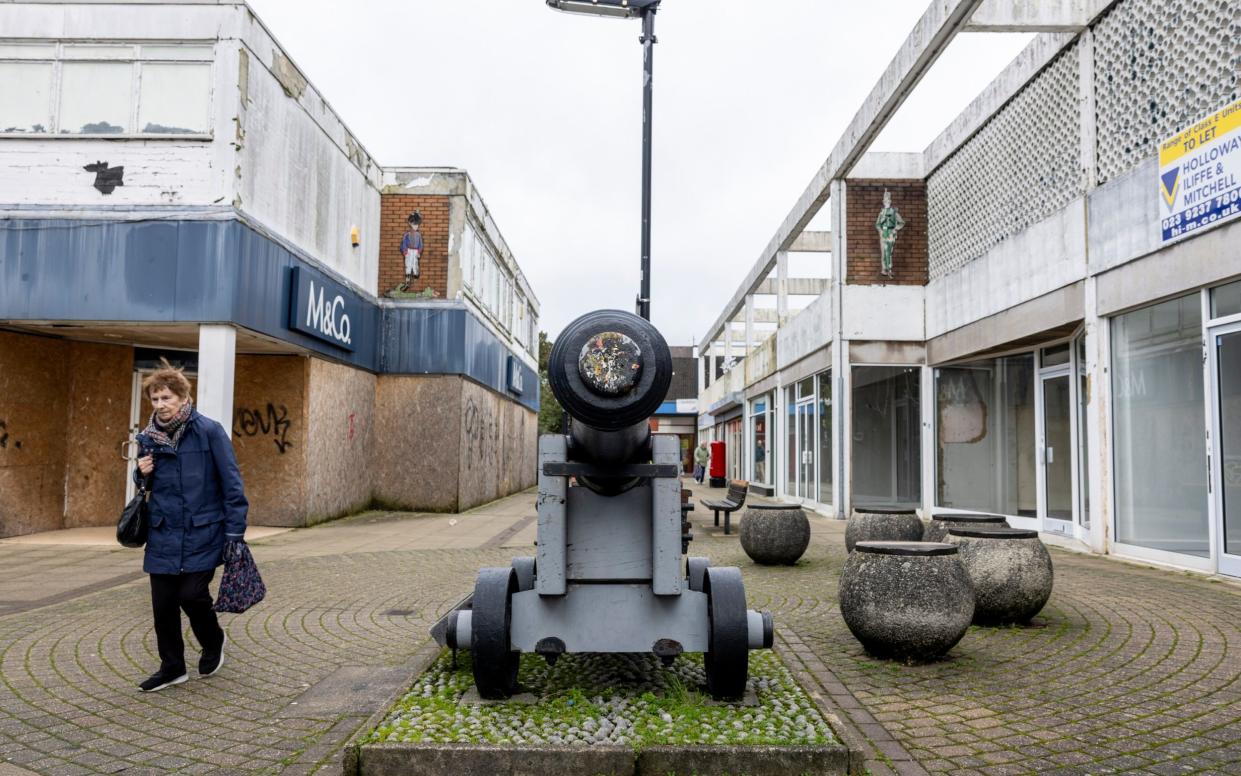
Christopher Howse is travelling the nation to speak to local people about their high street. How it has changed and what they miss… This week, Christopher explores Waterlooville in Hampshire.
I felt a bit shell-shocked after walking round the Wellington Way shopping centre in Waterlooville. Shop after shop was empty. Chipboard that secured doorways and windows was warped and damp. Still soldiering on were a charity shop or two and Iceland, beside the car park. But this was what a dead town centre looked like.
London Road, from which Wellington Way opens, was quiet. The quietness was not like the sleepy station at Adlestrop in Edward Thomas’s poem. It was more like the desertion of Black Rock when Spencer Tracy arrives.

As I stood in the bare expanse of the pedestrianised London Road I was consoled by the sight of some attractive-looking leeks outside a greengrocer’s. They had an air of being freshly painted, but they were real enough and the shop behind them was real too, not a nail bar or amusement arcade.
“If you think it’s bad now, it used to be worse,” says Andy Price, aged 52, the proprietor of Waterlooville Fruit & Veg, standing among his prize produce like a judge at a village show. He was talking of the Wellington Way centre, where he had a shop for 20 years before making his escape to London Road in 2022.
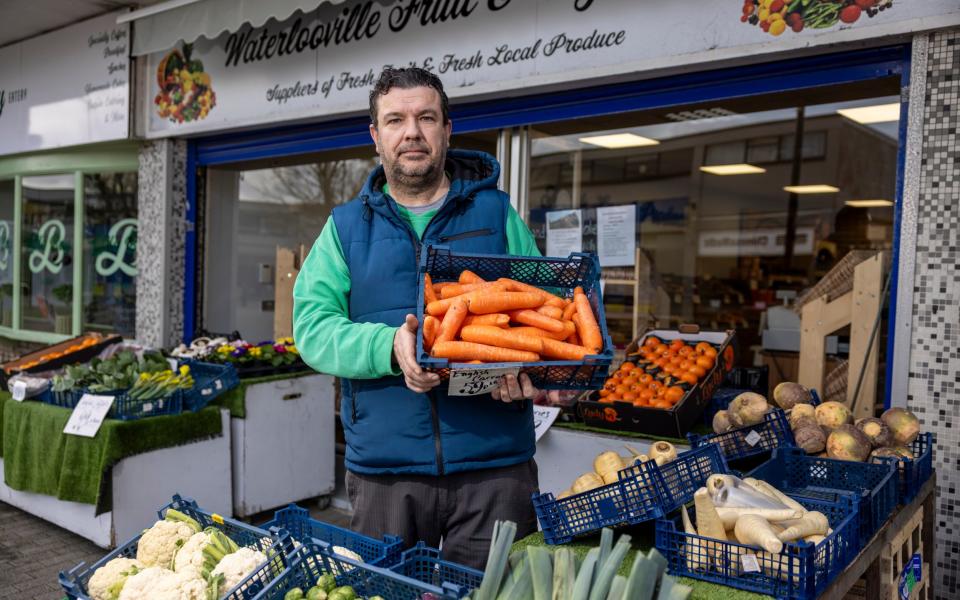
On his phone he showed me some pictures of Wellington Way (built in 1966): empty shops with weeds growing up inside them; empty shops with broken windows; empty shops with heaps of detritus and plastic chairs lying on their sides. In recent months the windows have been mended, the weeds uprooted.
“Wellington Way Shopping Centre, right at the heart of the town,” says its website. “Offers a great mix of high-street names and boutiques. Come on down and enjoy the atmosphere.”
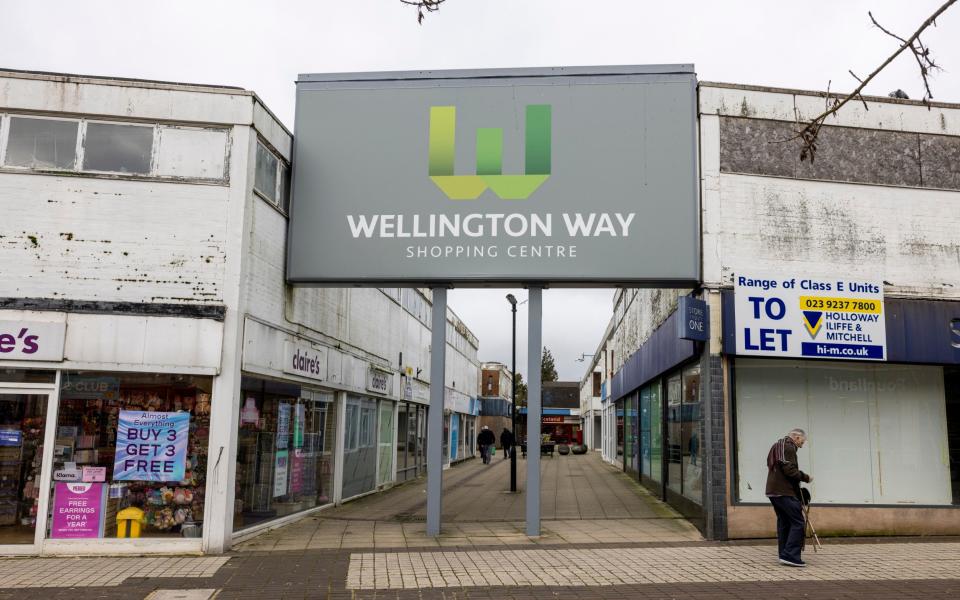
You would have to be deranged to enjoy the atmosphere. AllMobility does have a fine display of wheelchairs in the window, and the charity shops ASAP Cat Rescue (aka Purrfect Paws Feline Welfare), Sue Ryder and Stella’s Voice (for those vulnerable to trafficking in Moldova) keep their doors open. But M&Co, a clothes outlet, shut up shop here in 2020. Outside, a forlorn Waterloo cannon stands guard in a hopeless sort of way. “Range of Class E Units to let,” urge the agents’ signs on long-empty shops.
Waterlooville has changed from a cluster of Victorian villas on the Portsmouth Road to a dystopian photo opportunity. “The shopping centre was late Victorian in character,” wrote Nikolaus Pevsner in his volume on the buildings of Hampshire in 1967, “but it is being rapidly redeveloped with mini-precincts on both sides of the roaring A3.”
Since 1983, the A3 has roared in a dog-leg bypass, leaving the London Road, the main shopping street, as a comfortless pedestrian open space. Of the Victorian character little is to be seen. “Not one building merits description,” wrote the reviser of the Pevsner volume in 2018.
Things had taken a turn for the worse in 1966. That year saw England win the World Cup and the demolition of the Heroes of Waterloo, the pub that gave the town its name. Soon after came the demolition of the parish church of St George and of the Baptist church, with its surprisingly Italianate tower, a feature of views of the town since 1885. On the three acres behind the pub, a shopping precinct was built for £600,000.
The town’s funny name derives from the pub that opened six miles from Portsmouth in the Forest of Bere after the victory at Waterloo in 1815. Towards the end of the 19th century, “-ville” was tacked onto the end to distinguish it from other Waterloos, in Lancashire or Dorset. The pub prospered on the stagecoach route from Portsmouth to London. It was rebuilt in 1890 with four gables, fake beams and 17 bedrooms: “Delicious views are obtained from some of these,” said an advertisement of the time.But even in 1895 the travel writer Charles G Harper (who wrote 170 books with an atmosphere of the Roast Beef of Old England), found the town “wearing not so much the appearance of an English village as that of some mushroom township in the hurried clearings of an American forest”.
In 1851, the population was 195; in 1951 it was 2,221; by 1971 it was more than 10,000. Waterlooville was growing faster than any other town in Britain. People came from Oxford and Reading. Portsmouth City Council built two council estates here for its overspill in the 1970s. Nearby villages merged into one another: Cowplain, Denmead, Horndean, Purbrook, swelling the Waterlooville conurbation to more than 60,000.
By the time the London Road was pedestrianised in 1985, the centre of Waterlooville was losing its shape. In London Road, the remains of the Curzon Cinema (opened 1936; closed 1959) were demolished in 2013 and the space given over to a car park. Next to it Waitrose opened a 25,000 sq ft supermarket in 2000, but closed it in 2020. Wilko nearby closed down last September. NatWest closed down its bank by the crossroads last year too. Reasons for coming into town were dwindling.
On my visit I’d just missed the Waterlooville Town Centre Masterplan four-day Festival of Ideas in the empty premises that were once the Game video games shop. Havant Borough Council is offering up to £50,000 for permanent renovation works in the central Waterlooville Vacant Shop Scheme Zone. But its whole fund is only £114,000.
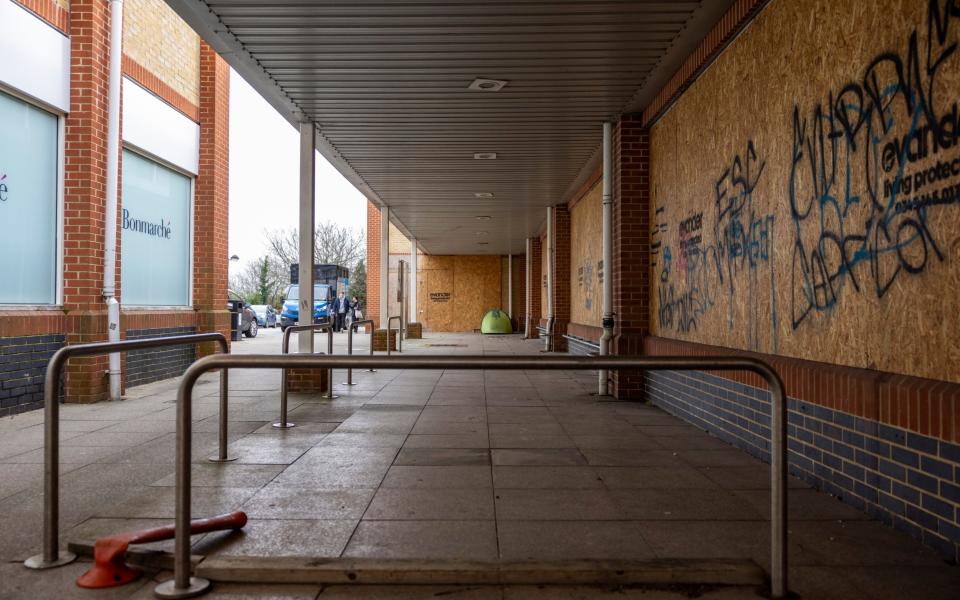
Beside the ruin of Wellington Way stands St George’s, rebuilt in 1970 (for a 12th of the cost of the shopping centre) to provide more room than the neo-Gothic church demolished in 1967. It is the sort of Anglican church with a holy-water stoup and regular Benediction. When I popped in, Father Charles Howard, a grey-bearded retired clergyman, for 24 years a Naval chaplain, was guiding a small scripture study group.
In addition to worship, the church acts as a meeting place. Knit and Natter meets weekly in the church hall, which also holds a market every fortnight for crafts, cakes and marmalade. A friendship group offers a coffee morning every fortnight, with “bereavement support if needed”. There’s a film club once a month.
Of the previous church, the dyspeptic Charles Harper wrote: “The church of Waterlooville is a building of so paltry and vulgar a design, and built of such poor materials, that a near sight of it would be sufficient to make the mildest architect swear loud and long.” The large windows of the 1970 reconstruction would look out on a tranquil churchyard were it not for the loud A3 bypass immediately beyond it.
The new generation of buildings in Waterlooville has tended to lack robustness. In 1970 a new library behind the London Road was built for £98,000, with another £38,000 spent on books. After three years, structural defects were found and the top floor stood empty until 1976.
A letter in the local newspaper declared that “the warmth of the happy librarians in Waterlooville compensates a lot for the bleakness of the outward appearance of the building they work in”. In 1983 synthetic cladding on the top floor had to be replaced with traditional lead sheeting. I think it looks good, even though the building stands marooned by car parks and the service road to the abandoned Waitrose.
On the other side of the bypass a large Marks & Spencer’s “Food Hall” and a big Sainsbury’s both have parking. Asda is nearby. While I was talking to Mr Price in his greengrocer’s we agreed that people preferred to choose their fruit and veg themselves rather than having a supermarket deliver it, sight unseen. But a woman who had come in to buy potatoes and cheese said: “I rely on deliveries because I’ve got six children. The deliveries are fine 99 per cent of the time.”
Car park spaces are jealously guarded at the Heroes pub re-established since the 1960s at the north end of the pedestrian stretch of London Road, behind a sign showing Lady Butler’s painting of the charge of the Scots Greys at Waterloo. Drivers must notify bar staff of their car registration.
Inside, a lively discussion was in train on the paradox of alcohol-free Guinness costing more than the real thing. Next door, the Denmead Queen is a Wetherspoons that opened in 2011 and is, as in other blighted town centres, somewhere for people to sit during the day.
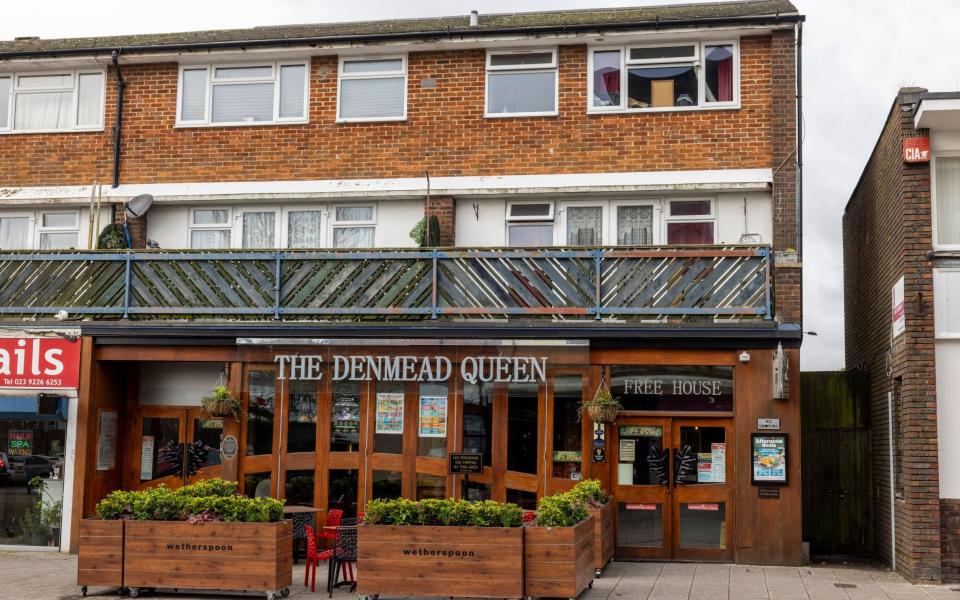
Three old ladies were at one table.
“What are you doing for your birthday, then?”
“Not a lot, I don’t expect.”
Wetherspoons offers unlimited refills of a £1.56 cup of coffee. This was the occasion for a moment of friction between the old ladies, when one said to another of the third: “She dun’t want another cup”. This method of reference was taken to be bad manners. I expected to hear: “Who’s ‘she’, the cat’s mother?” So, before I did, I bailed out of the Heroes and found the bus stop for Havant, half an hour away, the nearest railway station.
Previously: Fishergate in Preston | Yarm, North Yorkshire | Watergate Street, Chester | Shields Road, Byker | Abbeygate Street, Bury St Edmunds | Lewes, East Sussex

